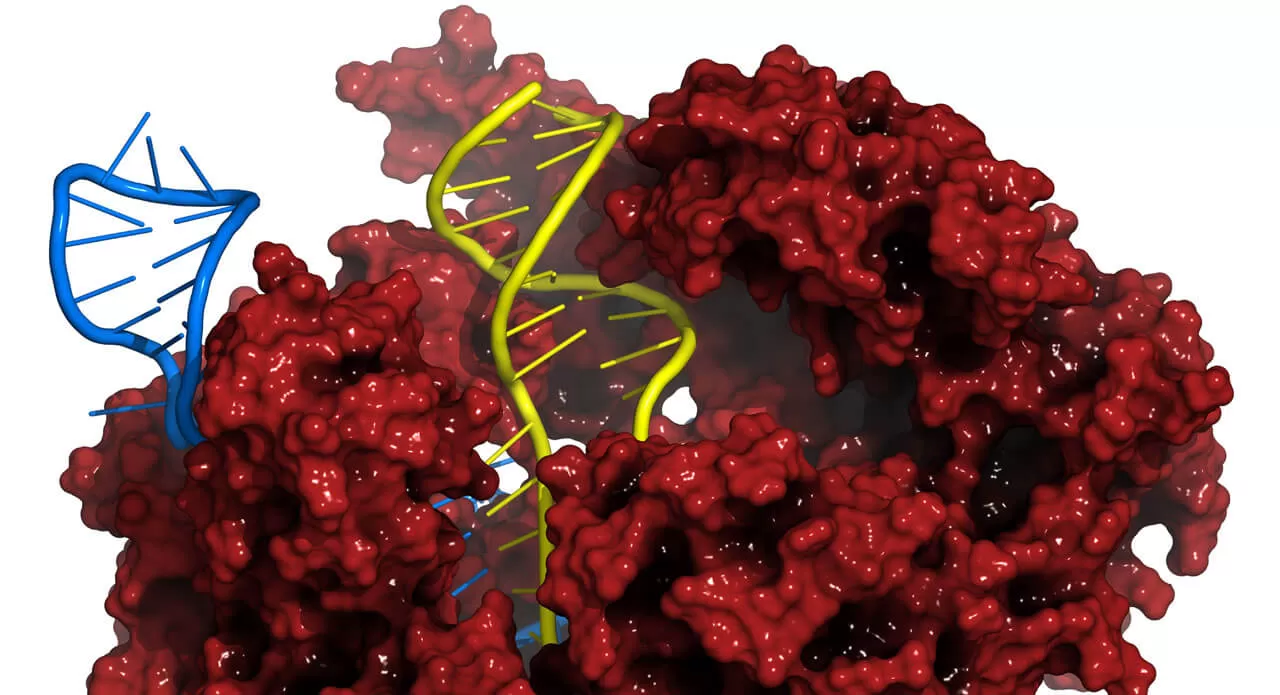How CRISPR Helps Find the Genetic ‘Needle in a Haystack’ of Diseases

CRISPR is best known as a powerful gene editing tool, but it’s also helping scientists search for the genetic sources of certain diseases.
There’s been a lot of buzz in recent years about CRISPR, the powerful genome editing tool that acts like a pair of molecular scissors that can snip out and replace a specific chunk of genetic code, allowing scientists to make precise changes. Recent advances have made CRISPR even more precise, and researchers have likened it to a molecular pencil capable of changing a single letter, or “base,” in the DNA, according to an October 2017 paper in the journal Nature.
But there’s a lesser-known use of CRISPR that’s proving to be invaluable for disease detectives — namely, in helping them search for the genes linked to certain diseases.
“CRISPR is not only a gene editing tool, it's really a whole toolbox for studying genes,” says Dr. John Reidhaar-Olson, the head of Pfizer’s Functional Genomics Center in Cambridge, Massachusetts. “It's a powerful technique for research because it's given us, for the first time, a really straightforward way of manipulating genes in all kinds of ways.”
Using CRISPR to Study Friedreich's Ataxia
One way that Reidhaar-Olson and his team are using CRISPR is to study the genes linked to a rare inherited disease called Friedreich's ataxia, which causes a slew of health problems, including loss of sensation in the arms and legs, impaired muscle coordination and scoliosis — a sideways curvature of the spine.
Researchers have known that the genetic abnormality in Friedreich's ataxia causes a deficiency in a protein called frataxin, which ultimately leads to the neurological damage. “Friedreich's ataxia patients end up having maybe 10 percent of the level of frataxin that normal individuals have and that's really where the problem arises,” Reidhaar-Olson says.
Reidhaar-Olson and his team are using CRISPR to manipulate genes as a way to investigate why neuronal cells in particular are affected.
Knocking Genes Out vs. Knocking Them Down
Reidhaar-Olson’s team is starting with a small library of candidate genes to knock out — that is, turn off or disable — using CRISPR, in order to find genetic pathways that could point the way to potential therapies. Eventually, they could widen their search over the entire human genome.
Before the advent of CRISPR, researchers used a technique called RNA interference (RNAi) to inhibit gene expression. Even though it was considered a revolution in itself, RNAi doesn’t completely “knock out” a gene but rather “knocks it down,” Reidhaar-Olson explains, so the effect wasn’t as clear-cut as with CRISPR.
“The thing that's most exciting to everybody about this is that CRISPR is such a powerful approach,” he adds. “It lets you find that needle in the haystack.”
Applying the CRISPR Toolbox to Other Diseases
The method doesn’t end with Friedreich's ataxia. Reidhaar-Olson and his team are also using CRISPR to study other ailments, such as fatty liver disease. And that’s just for starters.
“It's really a huge revolution in terms of being able to manipulate the genome in very precise ways,” he says. “My lab is trying to apply tools to help understand which genes play important roles in those diseases, so that we can identify targets to go after in our drug discovery efforts.”





